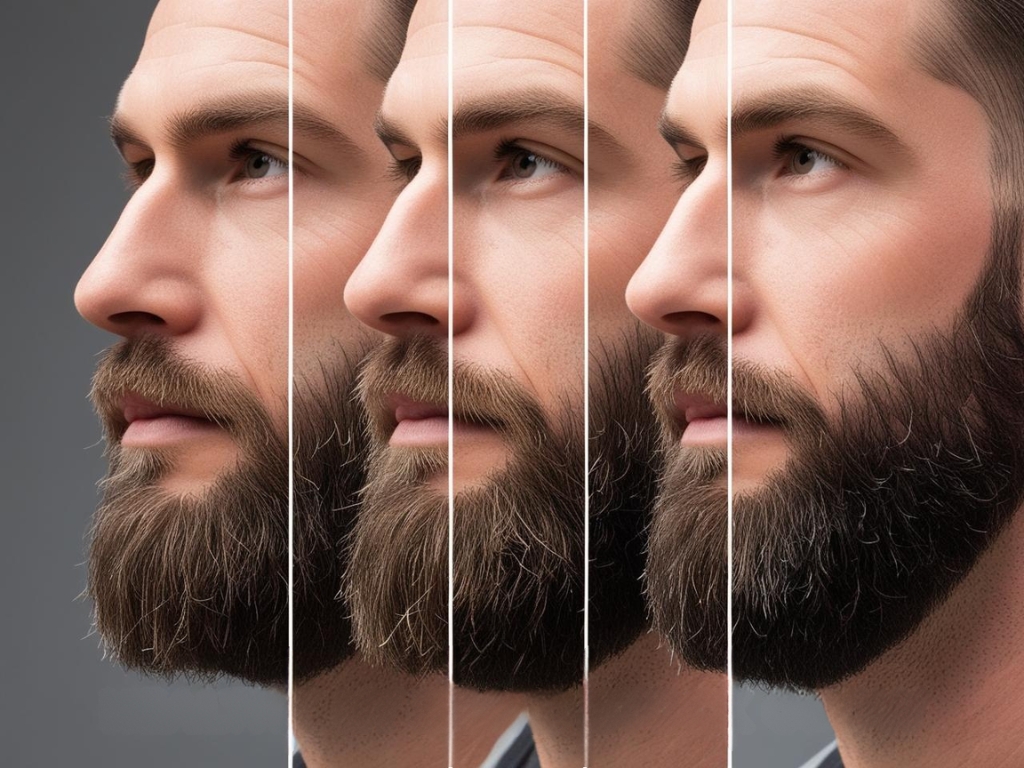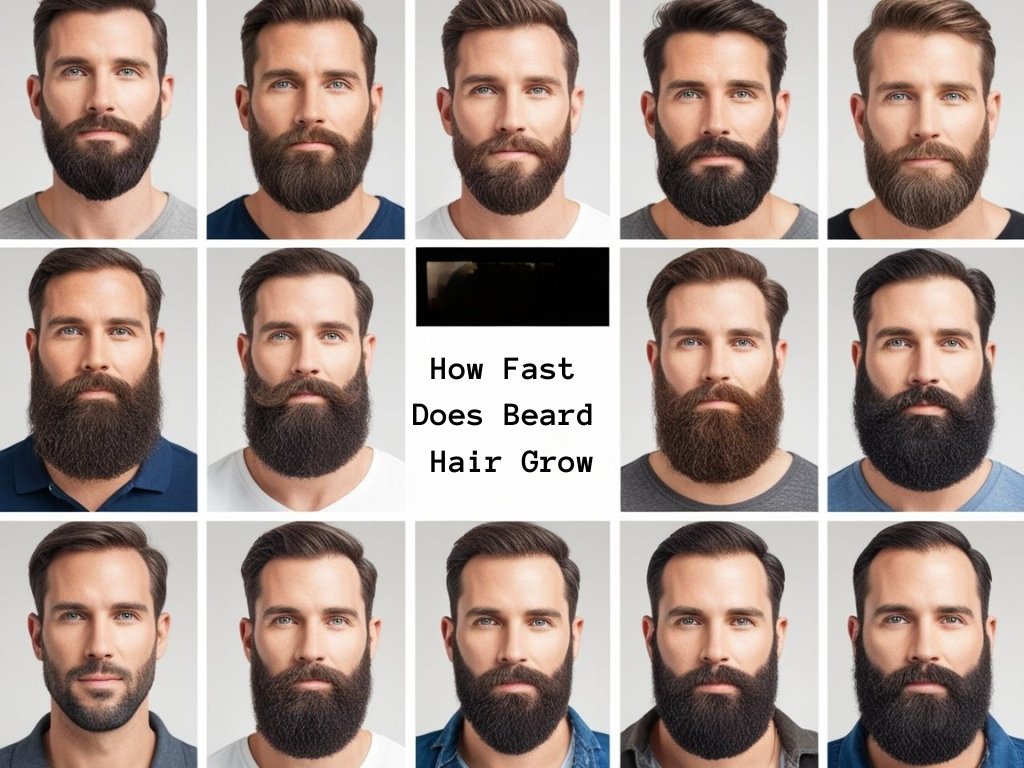How fast does beard hair grow, and have you ever wondered why your beard growth might seem slow or uneven compared to others? Understanding the ins and outs of beard growth can feel a bit like unraveling a mystery. In this article, I will uncover the fascinating details about how fast beard hair grows and the various factors that might influence this process.
Understanding Beard Hair Growth
Before we dive into the specifics of how fast beard hair grows, it’s crucial to understand what beard growth entails. Beard hair growth is a complex biological process influenced by various internal and external factors. Your beard grows from hair follicles, which are tiny sacs in your skin where hair starts its journey. Each follicle goes through a cycle that includes phases of growth, transition, rest, and shedding.
The Hair Growth Cycle
All hair, whether on your head, face, or anywhere else on your body, goes through a growth cycle with three main phases:
- Anagen Phase (Growth Phase): This is the period during which hair grows actively. Around 90% of the hair follicles on your face are usually in this phase. The duration of the anagen phase varies for each person, and it can last from a couple of months up to several years.
- Catagen Phase (Transition Phase): This is a short transitional phase lasting about two weeks. Hair stops growing as the follicle shrinks and detaches from the blood supply.
- Telogen Phase (Resting Phase): In this phase, the hair rests, and no new growth occurs. After a few weeks to months, the hair will shed naturally, making its way for a new hair in the anagen phase.
Average Growth Rate
On average, beard hair grows at about half an inch per month. That equates to approximately six inches per year, assuming optimal growth conditions and no interruptions in the hair cycle. However, this rate can differ significantly from person to person based on genetics and environmental factors.
Genetic Factors Affecting Beard Growth
Your genetic makeup plays a critical role in determining your beard growth rate. Genetics can influence the number of hair follicles on your face, the thickness of the hair, and the individual growth cycle of each follicle.
Ethnicity and Hair Growth
Ethnicity can sometimes play a role in beard hair growth patterns. For instance, people of Caucasian and Middle Eastern descent often have denser and fuller beards than those of East Asian descent. However, these are general trends and don’t apply to every individual since there’s a vast range of beard growth patterns across all ethnic groups.
Hormonal Influence
Hormones, particularly testosterone and dihydrotestosterone (DHT), significantly affect your beard growth. While testosterone is responsible for the density and distribution of hair follicles, DHT is more closely related to accelerating hair growth. Individuals with higher levels of these hormones tend to grow fuller beards.
Environmental and Lifestyle Factors
While genetics and hormones lay the groundwork for beard growth, several environmental and lifestyle factors also influence the speed and fullness of beard hair.
Nutrition and Diet
To ensure optimal beard growth, a balanced diet rich in essential vitamins and minerals is crucial. Vitamins like A, B, C, D, and E, along with minerals such as zinc and iron, are crucial for maintaining healthy hair follicles. Foods rich in protein, biotin, and omega-3 fatty acids are particularly beneficial for beard health.
Stress and Beard Growth
Stress can have a negative impact on beard growth. High-stress levels increase cortisol production, which can interfere with the effectiveness of testosterone in promoting hair growth. Reducing stress through activities like exercise, meditation, and adequate rest can help in fostering better beard growth conditions.
Skincare and Beard Maintenance
Taking care of your skin and beard ensures optimal conditions for hair growth. Regularly washing your face and beard helps keep follicles open and healthy. Additionally, applying beard oil or balm can moisturize both the skin and hair, reducing breakage and promoting a fuller appearance.
Setting Realistic Expectations
While everyone hopes for a fast-growing, lush beard, it’s essential to understand that patience is key. Understanding your natural growth patterns and setting realistic goals can help avoid disappointment and encourage satisfaction with your beard.
Typical Growth Expectations
Given the average growth rate of half an inch per month, growing a substantial beard takes time, potentially several months for noticeable length and density. During this time, it’s normal to experience phases of fast and slow growth, as well as uneven patterns as hair follicles operate at different rates.
Patience and Acceptance
Embracing your beard’s natural state can be a great way to manage expectations. Not every beard will grow universally thick or fast, and that’s perfectly normal. Accepting your unique growth rate and patterns will allow more positive experiences as you nurture your facial hair.

Frequently Asked Questions
To further clarify any doubts or misconceptions about beard growth, here are answers to some common questions:
Does Shaving Make Beard Grow Faster?
No, shaving does not influence the rate of beard hair growth. This popular myth likely stems from the perception that hair feels coarser and appears darker when it grows back after being shaved. However, this is purely a visual sensation and not related to growth speed.
Can Supplements Improve Beard Growth Speed?
While no magical supplement can drastically speed up beard growth, certain supplements could support healthy hair growth by ensuring you have the necessary nutrients. Biotin, in particular, is often recommended for hair health, but it should be taken with a healthcare provider’s guidance.
Is Uneven Growth Normal?
Yes, uneven growth is entirely normal due to the asynchronous nature of hair follicles where not all are in the growth phase simultaneously. Different regions may also respond to hormonal influences in unique ways, leading to varied growth patterns.
Conclusion
Beard growth rates vary greatly from person to person, influenced by a combination of genetics, hormones, nutrition, and personal care routines. With an average growth of about half an inch per month, patience is often essential when nurturing your desired look. While you can’t change your genetics, you can optimize other factors such as your diet, stress levels, and skincare habits to support the healthiest possible beard growth. Embrace your individual journey with all its quirks and idiosyncrasies, and you’ll find satisfaction in whatever direction your beard takes!


